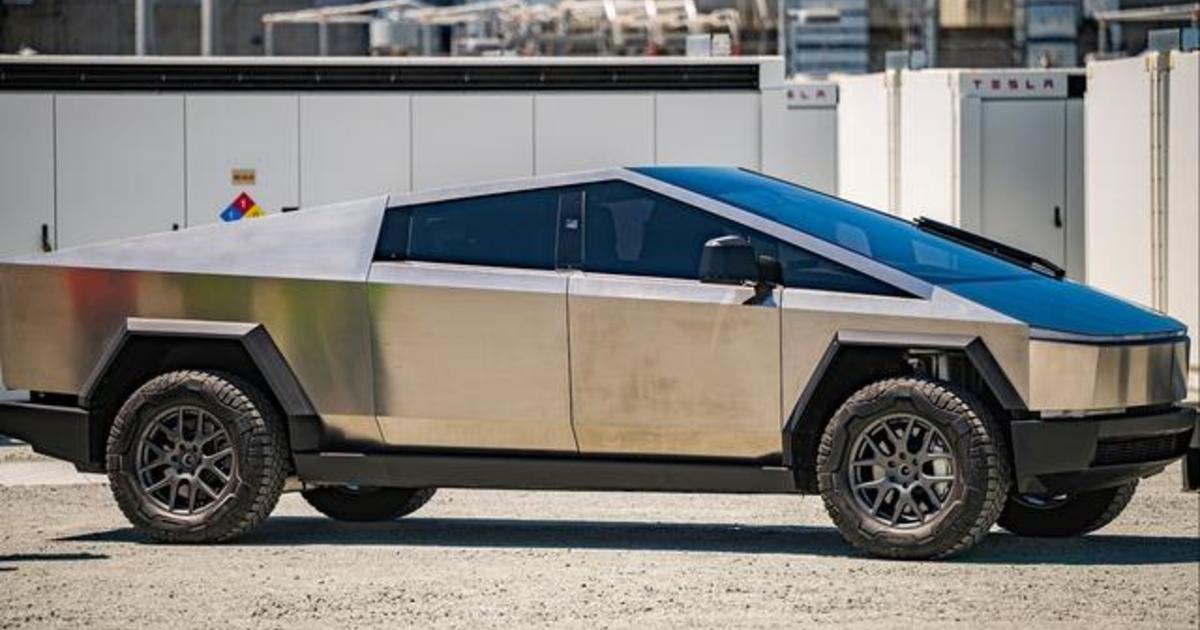Biggest threat to Ford? Not GM, but Silicon Valley
Ford Motor (F) replaced its chief executive, a 28-year company veteran, because major shareholders -- including the founding Ford family -- had the willies about Silicon Valley competition. They wanted a more innovative CEO who could promote electric and autonomous vehicles -- and someone who could get the company's flagging share price up.
"The stock was driving the decision" to replace Fields, said Jeff Windau, senior analyst at the Edward Jones investment firm.
Departed CEO Mark Fields "was an operational tinkerer, and the Ford family was concerned about Silicon Valley," said John Augustine, chief investment officer at Huntington Bank. "And that's despite the fact that Ford is profitable and has a strong balance sheet."
Those observations sum up Wall Street's take on the giant automaker's announcement Monday that it was removing Fields, 56, after only three years in the top job, to make way for a guy who used to sell office furniture.
Actually, the contrast isn't that stark: The new head man, Jim Hackett, 62, is the former CEO of Steelcase (SCS), but he's hardly an automotive novice. He has been a Ford director since 2013 and for the past year has led the company's "smart mobility" operation, which means driverless cars.
"We're moving from a position of strength to transform Ford for the future," Bill Ford, the company's executive chairman, said in a statement. He's the patriarch of the family, descended from founder Henry Ford. The Ford clan controls the voting stock in the nation's second-biggest automaker by market share.
The investment community hasn't looked kindly on Ford under Fields, who took over the corner office in July 2014. In an online shareholder meeting earlier this month, some investors termed the stock's performance "dismal" and "pathetic."
When news of his departure broke Monday, the share price jumped more than 2 percent. During Fields' tenure, Ford stock had dipped almost 40 percent.
Meanwhile, during that three-year period, shares of General Motors (GM), the largest U.S. car company, are down just 13 percent. Toyota (TM), with the third-largest U.S. market share, is off 9 percent. Only fourth-ranked Fiat Chrysler (FCAU) is ahead, with its stock up 55 percent due to its emphasis on higher-margin vehicles like SUVs.
Ford shares have steadily descended even during the auto business' hot streak in 2015 and 2016. Although profits came in nicely for Ford, rivals did better. Only this year did the auto industry hit a bumpy road, with sales skidding. Some blame consumer fatigue for the drop, which extended to just about all carmakers. Others point to deteriorating credit among U.S. consumers.
Either way, Ford has fared the worst, with its market share for 2017's first four months slipping to 15.1 percent from 15.6 percent in a shrinking market.
But investors are more focused on the future than the present. And here, skeptics have wondered how well Ford will fare in electric vehicles, self-driving technology and car-sharing programs. Competition from the likes of Tesla (TSLA), Google parent Alphabet (GOOG), Apple (AAPL) and ride-hailing service Uber Technologies, all based in or near Silicon Valley, is intense.
Tellingly, Tesla recently surpassed Ford and then GM to become the largest U.S.-based car maker by market value, at $51 billion. And that occurred in spite of Tesla's oceans of red ink while the others are in the black, and the comparatively tiny number of units Tesla has sold.
In this cutthroat field, Ford under Fields had the most disadvantages. "Fields was a victim," said Andy Kapyrin, director of research at RegentAtlantic Capital. "He lacked a strategic vision." Fields could not be reached for comment.
Factors that compelled Ford to change leaders:
Future technology adaptation lagged. The Silicon Valley rivals are far ahead of Ford on this score. Uber has begun experimenting with driverless cars in Pittsburgh. While the project has had some problems, this is the sort of ambitious venture that Ford and other automakers haven't matched. But GM is at least ahead of Ford on self-driving cars: It bought autonomous auto startup Cruise Automation and invested in Lyft, an Uber competitor.
On electric cars, Ford is far back in the pack. It won't have one on the market until 2021. But in 2010, GM brought out the Chevy Volt, a hybrid (meaning the car is battery powered until the battery is depleted, then a gasoline engine kicks in). This year, GM is gradually rolling out its all-electric Chevy Bolt, which can go more than 200 miles before requiring a recharge -- a driving range considered the gold standard of these so-called plug-ins. The Volt's all-electric range is just over 50 miles.
Tesla has started production on its Model 3, a plug-in that also hits the 200-mile range mark. Reservations for the car are enormous. In a bid to increase their customer bases, both the Model 3 and the Chevy Bolt are priced far below their predecessors: The Tesla entry is around $35,000 and GM's is $37,500. (Federal tax breaks shave several thousand off the sticker price.)
These new vehicles should help boost sales, which are hardly stratospheric. Electric vehicles make up less than 1 percent of the U.S. auto total.
"Electric cars won't have 50 percent of the market soon, that's decades away," RegentAtlantic's Kapyrin said. "But you need to have an offering now."
Bold strategic moves were few. Ford announced plans last month to cut costs by $3 billion a year to free money for that much-needed new product development. Last week, the carmaker said it plans to cut about 1,400 jobs, roughly 10 percent of its salaried staff. GM has been quicker to make cost cuts that clear the decks of economic drags so it can concentrate on new forays. CEO Mary Barra is selling the company's long-time money-losers in Europe, Gemany's Opel and Britain's Vauxhall, for $2.3 billion.
Detroit reaps the most profits from its larger models, particularly SUVs. But Ford under Fields didn't create a new SUV or at least update existing brands, Kapyrin said. "That's unforgivable," he said, noting "the Ford Explorer and Navigator are long in the tooth." This year, by contrast, Barra's GM debuted a new Acadia SUV that's smaller and more fuel efficient than the previous generation. That's in addition to her purchases in new technology.
"Fields simply wasn't an innovator," Huntington's Augustine said. The sole major product change as CEO, he said, was when Fields in 2015 shifted the top-selling F-150 pickup to using more aluminum in its body, thus reducing weight and aiding fuel efficiency.
Personality and leadership. Fields did have a hard act to follow: Alan Mulally, who took over in 2006. Mulally won kudos for steering Ford through the economic downturn and revamping its operations. He sold off brands like Jaguar, Land Rover and Aston Martin, racheted down onerous union contracts and amassed a huge cash position that helped it weather the Great Recession.
Crosstown rivals GM and Chrysler went bankrupt and required government bailouts. Not Ford, because Mulally in 2006 -- before the slump happened -- had presciently borrowed $23.6 billion by mortgaging all the company's assets.
By the same token, new CEO Hackett had turned around Steelcase by updating its product line to make furniture that was more ergonomic and in tune with open-space offices, which were coming into vogue after years of cubicle floor plans. Without Hackett, "Steelcase would be obsolete by now," noted Rebecca Linland, an analyst at Kelley Blue Book, the automotive research firm. His success as a turnaround artist proved attractive to Ford's board.
Hackett and Mulally, another turnaround-oriented executive, came aboard as outsiders to the auto industry. Mulally had been a leading official at Boeing (BA), the airplane maker and defense contractor. Of course, he made machines and Hackett didn't. But Hackett had strong links to Silicon Valley, whose tech firms were big customers for his furniture.
Also, Mulally and Hackett are considered more dynamic personalities than Fields. "There's an energy that emanated from Alan," and the same goes for Hackett, Kelley's Linland said. The Ford board "was looking for a charismatic change agent."
And to meet the technological tomorrow facing the car industry, Ford needs that badly.



